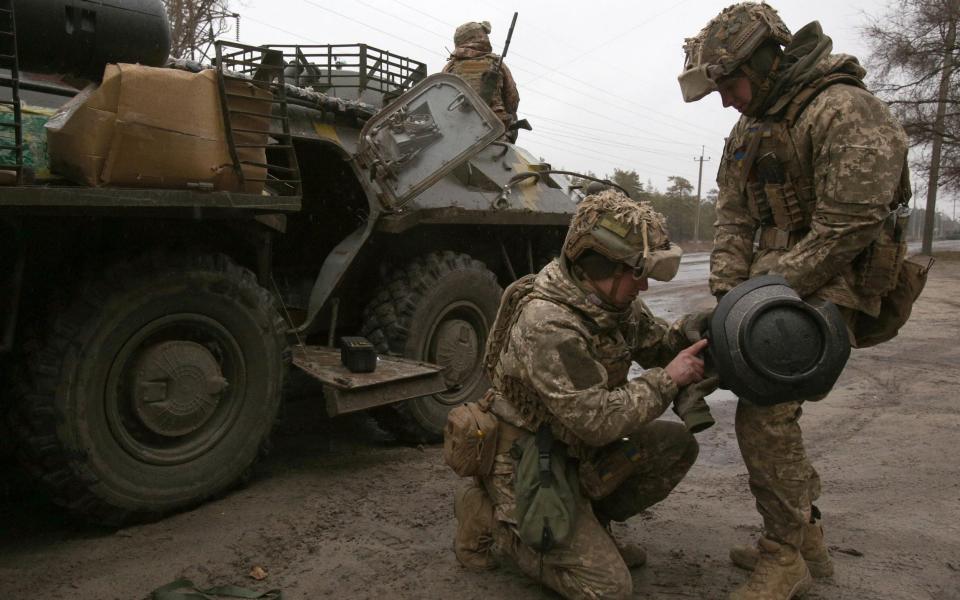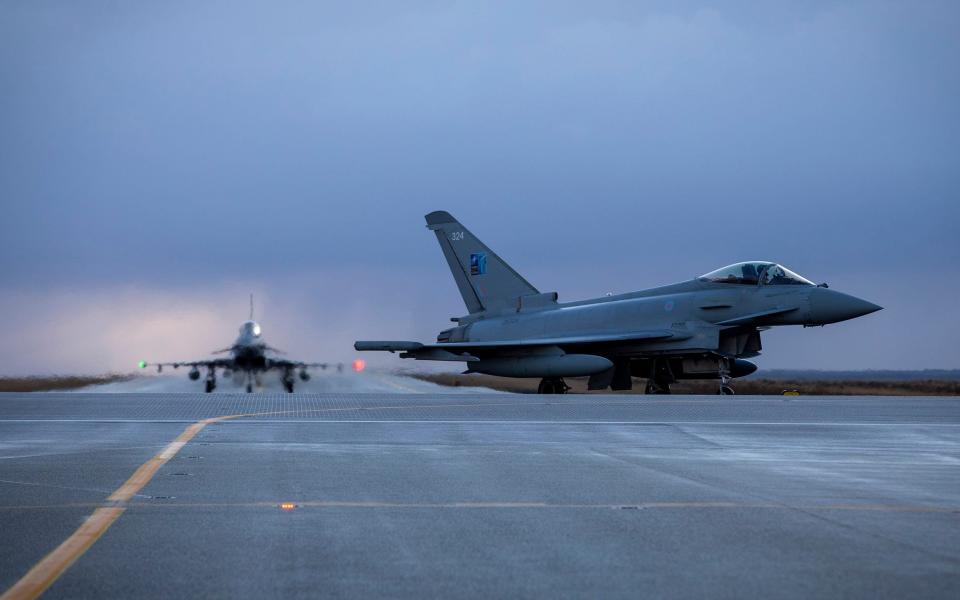British arms makers tool up for Putin’s new Cold War

Britain’s ironmongers are gearing up for a return to conventional warfare in the wake of Russia’s attack on Ukraine.
After years of counter insurgency, investors are betting the threat of a new cold war will trigger an arms race. Britain’s BAE Systems, as well as US aircraft maker Lockheed Martin, weapon manufacturer Northropp Grumman and engines-to-missiles conglomerate Raytheon, hit record share prices in the wake of the invasion.
But questions remain over whether the UK’s defence industry is ready to cope with an expected surge in demand, or if they risk losing business to US and European rivals as governments ramp up spending.
Last week, German chancellor Olaf Scholz said his country will this year invest a one-off €100bn in its military and lift annual defence spending to above 2pc of national output, the NATO target resisted by his predecessors.
Germany is a customer of the Eurofighter Typhoon combat jet, and is reportedly considering purchases of the F-35 fighter, both of which BAE Systems has a hand in making.
Romania may also soon increase its defence budget, from 2pc to 2.5pc, Poland has said it will now spend 3pc, as opposed to 2pc, and Foreign Secretary Liz Truss has indicated that the UK should increase its spending.
According to Charles Woodburn, chief executive of BAE, the company has already helped to soak up some of the recent spending by European nations through subsidiaries including France-based missile company MBDA and Swedish-based armoured vehicle maker Hägglunds.
With a flurry of buying new, complex equipment unlikely because of the time it takes to train with it, any new spending is likely to be on gear the military is already using, according to Sam Cranny-Evans, an analyst at the Royal United Services Institute (RUSI) think tank.
“A rifle can be introduced with a fairly low training burden. But an F-35 is a flying supercomputer,” he says.
According to Cranny-Evans, areas for growth are likely to be artillery and air defence, as well as electronic warfare, which includes radar, and jamming technology - a mix of conventional warfare equipment and the newest technology.
Some of this is already planned, but “their importance is magnified by the nature of the war in Ukraine,” he adds.
Amid a return to conventional warfare, experts say specialised counter-insurgency equipment such as the lightweight, Mine-Resistant Ambush Protected (MRAP) tactical vehicles used in Afghanistan, are likely to be less in demand.
Drones may also take a backseat, although “it's not a binary shift because there are still going to be parts of the world where they might be doing counterinsurgency type operations,” says James Black, a defence researcher at RAND.
A shift in demand for specific equipment will wean out the winners and losers in the defence world. In the UK, Cranny-Evans argues the troubled Ajax armoured vehicle programme, which has so far cost more than £4bn without delivering any usable vehicles, must be fixed or scrapped.
This could be a boon to some of Britain’s smaller, high-tech companies which make radar, electronic jamming and training kit.
One such firm is Essex-based Blighter Surveillance Systems, whose radars monitor the demilitarised zone for South Korea. Their portable systems, which do not rotate as traditional radars do, are designed to detect drones and troops on the horizon in day and night, as well as small craft on a shoreline.
Chief executive Angus Hone argues his products would be of use in modern warfare, particularly for Eastern European countries to monitor for activity along the 1,400 miles of its borders with Russia.
“From a land base or air base those threats are very real and we've got the capability to to help deliver,” he says.

Another likely beneficiary is Elbit Systems, an Israel-based company which employs 600 people in the UK. It makes radar and electronic jamming equipment, as well as simulation technology which is seen as key in training soldiers, sailors and aircrew in a cost-effective way without huge movements of armour and personnel.
“The technological advantage is hugely important. And it enables us to remain safe,” says Martin Fausset, chief of Elbit Systems UK, while hinting that the current situation has created more business.
Elbit has also made the Ministry of Defence’s battlefield management app, connecting the army, navy and airforce’s equipment to supply intelligence to make quicker decisions.
The weapon in the picture is equipped W/ XACT th64 marksman weapon sight. The control pad on top looks a lot like a video game controller. Using it, the soldier can select an area of interest & zoom in & out of the target from 1,300m away. More here 👉https://t.co/8Ot07o2AMP pic.twitter.com/jD7IWHO2ra
— Elbit Systems (@ElbitSystemsLtd) February 21, 2022
According to RAND’s Black, these type of systems are a large part of the future of warfare. Such apps could be key in getting different countries’ war assets to work together and share intelligence, as well as avoiding problems such as friendly fire incidents.
“What the armed forces want is for an F-35 to see a column of Russian tanks, and automatically send that data to the Royal Artillery, with everything they need to conduct an engagement,” said RUSI’s Cranny-Evans.
But who will spend what and where is a vexed question. Some European nations “are concerned that money spent on a US company is ultimately driving prosperity in the US”, for instance, Black says, leading to the decision to make equipment at home.
“Conversely, sometimes US companies will have the best technology,” he adds.
Depending on precisely how much tensions rise, the sum of money fought over could fast grow. Postwar military spending in the UK hit a peak of 11pc of the economy in 1953, and has been declining steadily until the turn of the century, where it has stayed between about 2pc and 2.6pc, but whether this remains the norm is yet to be seen.
During the cold war period it was at least at 4pc, worth roughly £80bn - or about double what it is today.
There may also be a shift away from simply setting a budget, with various allied European nations specialising in certain areas - landlocked countries might spend more on their armies, and those with long coastlines on bigger navies.
“You need to focus on things like capability and readiness, and actual output, rather than spending,” says RUSI’s Cranny-Evans.
“Successive governments have tried to put their stamp on what the armed forces should be doing,” which could be a reason to eschew more equipment beyond what is planned, he adds.
As Putin’s tactics become more aggressive, that spending may be essential.

 Yahoo Finance
Yahoo Finance